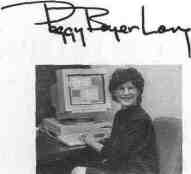
EDITOR'S NOTEBOOK

Capital reporters and editors launch a national association
by Peggy Boyer Long
It would be just like a bunch of statehouse reporters to decide to make history in a former bordello.
So we did.
Last month, journalists from throughout the country gathered at Mattie's House of Mirrors in Denver (now a respectable restaurant) to form what we believe (and hope) will be the first national association of state capitol reporters and editors.
The decision came during a three-day conference on state government reporting sponsored by Stateline.org (which produces a Web site devoted to news from the 50 statehouses), Investigative Reporters and Editors, the National Conference of State Legislatures, the Pew Center for Civic Journalism, the Associated Press Managing Editors and the Colorado Springs Gazette.
Some 100 reporters, editors, journalism professors and staff members of policy institutes showed up from 34 states and the District of Columbia. Illinois was well-represented, too. Reporters and editors from the Chicago Tribune, the Chicago Sun-Times, The Associated Press and Illinois Issues attended, as did staff from the Institute of Government and Public Affairs at the University of Illinois at Urbana-Champaign.
While the fledgling association must still choose a governing board, set membership guidelines and decide on dues issues that will be discussed at another meeting in Chicago later this month there was general agreement on a couple of points: An association of state government reporters is long overdue, and it is needed now more than ever.
Many statehouse reporters believe that what they do carries less weight these days, that their jobs have become more difficult. And last year, American Journalism Review published data that supports these concerns. The study, funded by the Pew Center, found that coverage of state governments is in steep decline. Fewer media devote resources to state government news, statehouse bureaus are shrinking and, as a group, state government reporters have less experience than in years past. In short, while media owners and managers have downgraded government news overall, they have a "growing disenchantment with state government news in particular," according to the assessment in AJR.
The study noted that nationwide in 1998 "only 513 newspaper reporters plus 113 wire service reporters, most of them with the AP now cover state government full time. By comparison, more than 3,000 media credentials were issued for this year's Super Bowl."
Oddly, the decline in state government reporting comes at a time when the power of the states is on the rise, when the need for more and better scrutiny of statehouses is most keen.
And that's the point. This trend has unfortunate consequences for the democratic process. Smaller news holes, and a diminished "institutional memory" in the states' press corps affects the quality of the information citizens get from their statehouses.
So the reporters and editors who met in Mattie's House of Mirrors agreed that sharing basic policy and political information across state lines could, at a minimum, help capitol reporters do their jobs better.
Still, getting a national journalism association off the ground won't be easy. Though Stateline.org and Investigative Reporters and Editors, two established organizations, might help in the early stages, it remains a daunting task.
But at least two things haven't changed much over the years. State-house reporters have always been an especially dedicated bunch with a finely honed sense of humor. It's no accident the Association of Capitol Reporters and Editors (ACRE) was born where political movers and shakers were once entertained by Denver's most famous madam.
For more information on the Association of Capitol Reporters and Editors, e-mail peggyboy@aol.com. ACRE should have its own Web site by next month.
4 / November 1999 Illinois Issues